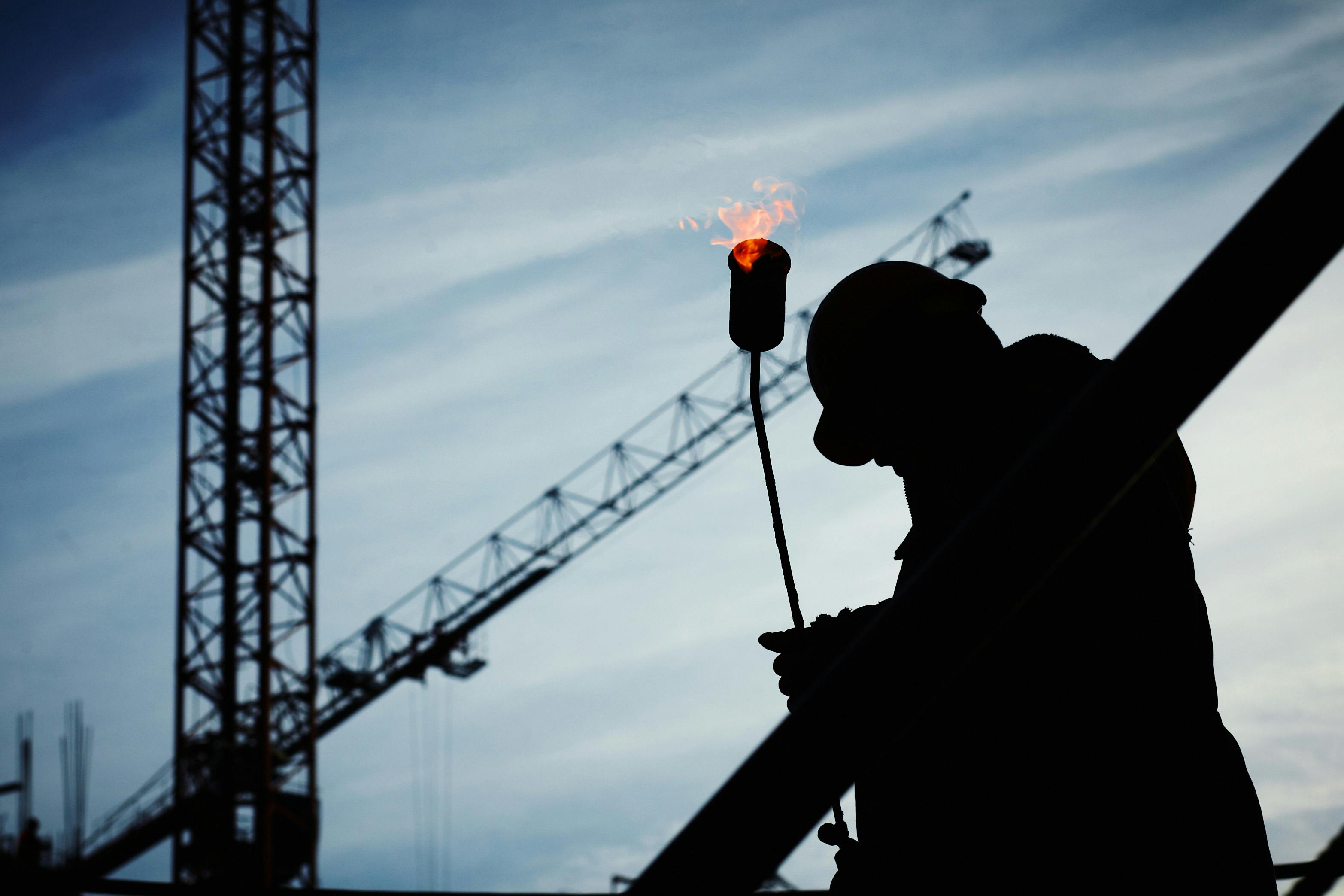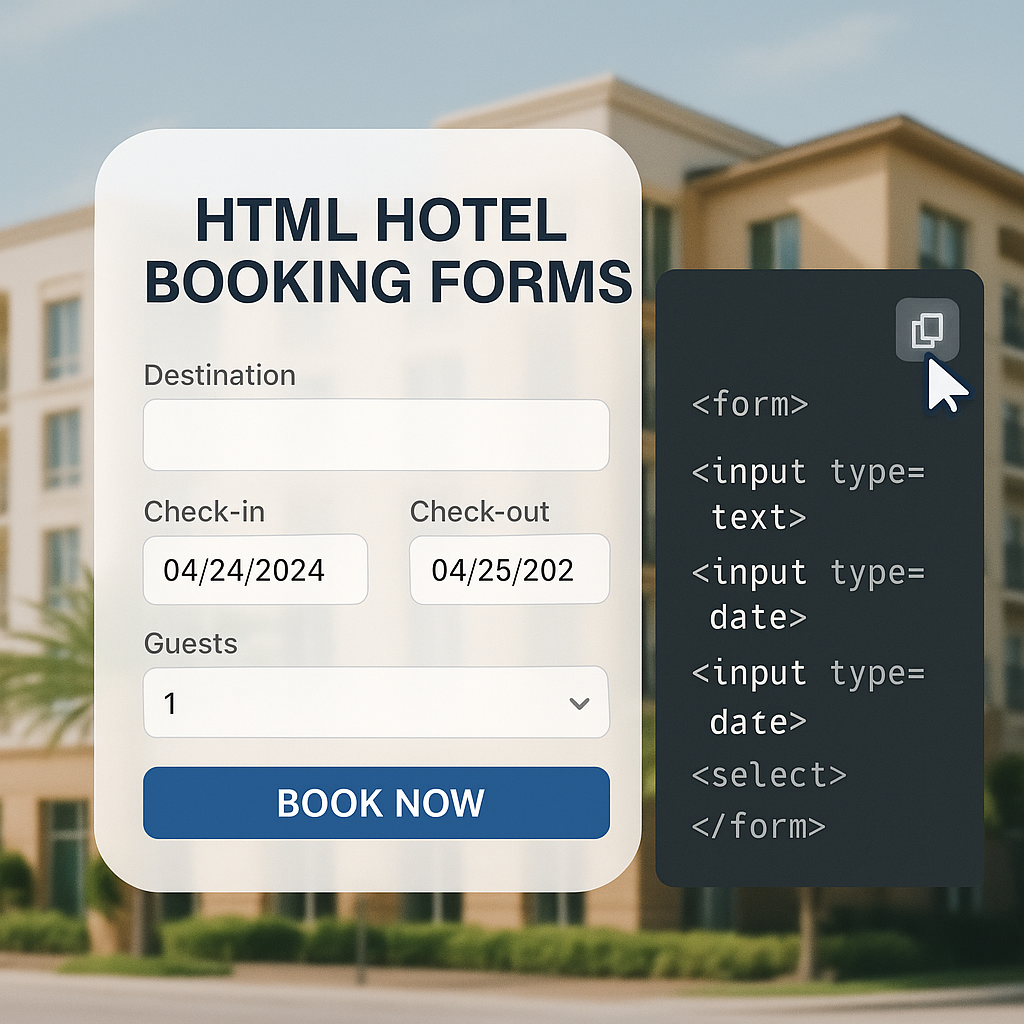Construction Project Cost Breakdown: 8 Crucial Steps To Follow

Every construction job has a number. Hit it, and you make money. Miss it, and things go sideways.
Whether you're pricing your first job or your 500th, staying on budget takes more than guesswork. Costs drift, plans change, and small mistakes snowball.
That’s why we built an eight-step playbook to help you price accurately, plan cash flow, and avoid the most common budget killers.
The Whole Process: 8 Essential Steps
The eight steps below give you a solid basis. Each one stacks on the last so you can price, track, and deliver the job without surprise overruns.
Step 1–Define Scope & Gather Inputs
Grab the complete drawing set; specifications, geotech reports, site surveys, and owner requirements. These documents are your money map. If you miss one, you're setting up a budget disaster.
Walk the site before you price anything. Measure distances, check access routes, and flag problems that'll cost you later.
Two things kill more budgets than any software glitch:
- Scope creep–The project grows after you bid. Every "small change" steals construction project margin.
- Missing input–When owners, designers, or subs stay quiet during planning, surprises hit in the field.
Here's how to stay ahead: Lock scope before pricing. Use a change log. Any modification gets written, costed, and signed. No signature, no change.
Get the right people talking. Schedule regular check-ins with owners, architects, and key trades. Treat unanswered questions like open holes—fix them before pouring money.
Must-have inputs before moving to costs:
- Signed drawing set
- Current specifications
- Geotechnical reports
- Site surveys
- Permits and zoning conditions
- Owner requirements with approvals
- Site photos and measurements
- Preliminary schedule
Step 2–Break Down Direct Costs (Labor, Materials, Equipment)
Every dollar you spend on site starts here, so let's slice the budget where it matters most.
Quick gut-check numbers keep estimates honest. If your takeoff spits out a labor share higher than the market norm, dive back in and look for fat.
These ranges come from aggregated project data.
They aren't law, but they are a solid sanity check. Large, mechanized civil jobs may blow past the equipment range; high-finish interiors can spike labor. When your mix drifts outside the band, stop and figure out why before the numbers hit the bid form.
Break labor, materials, and equipment down this way and you'll see where the money really goes.
Labor
Labor is the line item that gets out of hand fastest.
It usually eats 20–40% of the total budget, depending on project type and region. That range shows up in real job-cost data for both residential and commercial work.
The baseline formula is simple:
Crew hours × wage rate × reality factor = labor cost.
Wage rates are easy—check the local rate sheets.
The tricky part is the reality factor. Tight sites, stacked trades, extreme weather, or a new crew can drop productivity by 10–30%. Adjust this factor before you lock the number, not after the crew is already on site.
Rates swing by region too. When pricing works outside your home market, pull local wage tables and add travel costs so the estimate reflects reality.
When using this formula, always remember the reality factor is the most important piece.
Materials
Materials often account for 65-80% of your construction budget.
Start with a clean takeoff: count every yard of concrete, every sheet of drywall, every stick of lumber straight from the drawings.
Once you have quantities, get real supplier quotes. Add waste factors that match the job—3–5% for drywall in an open warehouse, 10% for tight remodel work.
Volatile stuff like steel and lumber needs escalation clauses or early buys to lock pricing. Long-lead items like generators and curtain wall need ordering after schematic, not when you're pouring the slab.
Equipment
Equipment feels small until you add fuel, maintenance, and idle time. On most jobs it lands between 5% and 15% of total cost. Always compare owning to renting:
- Owning = (purchase price ÷ useful life) + annual maintenance + storage
- Renting = daily or weekly rate × expected days on site
Then plug in how much the machine actually works.
A crane that's busy 80% of the time pays for itself. The same crane sitting idle two weeks a month belongs at the rental yard. Job duration and location tip the scales too. Remote sites push rental costs up, and long jobs justify buying or long-term leases.
Why Standardized Cost Codes Matter
Cost codes are the job-site version of a universal translator. When the field logs hours under "03-30 00 Concrete Finish" and accounting books invoices to the same code, you can spot overruns fast.
Using one code set from estimate through close-out lets you benchmark future jobs, argue change orders with data, and keep everyone on the same page.
Step 3–Capture Indirect & Soft Costs
You already know what concrete and rebar cost.
The trouble starts with the line items that never make it onto the takeoff sheet—permits, insurance, crew hotels, even the porta-johns.
These "soft" and indirect expenses routinely swallow 10-25% of a project budget, enough to wipe out your margin if you guess wrong. The fix is simple: treat them with the same discipline you give to steel tonnage.
First, get clear on what you're tracking. Soft costs sit outside the physical build and include:
- Professional services
- Design fees
- Legal filings
- Administrative overhead
- Project management
Indirect costs float around the site too such as
- Site security
- Temporary utilities
- General liability insurance
- Bonding
- The crew's travel and lodging.
A clear cost breakdown structure forces you to list each expense instead of hiding it in a catch-all percentage.
Next, build a realistic contingency.
Replace blanket percentages with hard numbers wherever possible. Pull historical invoices for permits, plan reviews, and utility hookups on past jobs in the same jurisdiction.
Call insurers early for project-specific premiums instead of applying a flat rate from last year's bid. Use vendor quotes for office trailers, dumpsters, and site fencing rather than a lump-sum allowance. Line-item clarity exposes hidden overruns before they grow.
Crew travel deserves its own spotlight.
Remote sites jack up hotel rates, and per diem rates can surge along with transport costs faster than any material price hike. Rotate specialized teams with multi city flights instead of flying the whole roster in and out. When local labor is available, hire it.
If crews need wheels, picking the best car rental company saves on mileage reimbursements and eliminates parking hassles at the hotel. You can use a business travel booking platform like Engine to help streamline this process.
Step 4–Choose & Apply an Estimation Method
Pick the right estimating approach and you'll know where every dollar should land.
Five methods work for most construction crews, depending on how much detail you have and how tight your deadline is:
- Quantity Takeoff: Counting every stick of rebar, every yard of concrete, every crew hour. It's slow, but nothing beats the accuracy once the drawings are final. When bid day is close, this is your workhorse
- Unit Cost: Pricing by the unit—$X per square foot of drywall, $Y per cubic yard of slab. Great for repetitive work and quick revisions, as long as your unit-price database is solid
- Assembly (System): Estimating prices of whole systems—roof package, elevator core, MEP rack—in one shot. Perfect during schematic when major components are known but details aren't
- Parametric: Feeding square footage or floor count into a model that spits out a cost range based on history. Quick for feasibility talks and early board approvals. Accuracy hangs on having good past data.
- Analogous (Top-Down): Taking the final cost of a past job, adjusts for scope, location, and inflation, and gives you a ballpark in minutes. Perfect when the drawings are a napkin sketch and the client just wants to know if they're in the right zip code.
Here's when each method works best:
Double up when it matters. A parametric check against your assembly number can flag a blown assumption before it gets poured in concrete.
Say you're pricing 2,000 square feet (SF) of interior drywall. Your database shows $4.15 per SF installed (materials, labor, equipment, overhead). Multiply:
2,000 SF × $4.15/SF = $8,300.
Now tweak for project conditions—a 10% premium for tight downtown access and a 5% credit for repeat layout. Final budget line: $8,300 × 1.05 = $8,715.
Faster than a full takeoff, accurate enough to lock scopes with subs.
Step 5–Remember To Factor External Influences
You can build the cleanest schedule and still blow the budget if you ignore what's happening outside the site fence.
Location, inflation, market swings, and project size all mess with your numbers. So when estimating each of your costs, keep these influences in mind:
- Material Transportation: Materials shift too. Hauling steel 300 miles costs more than unloading at the port next door. Add fuel surcharges and volatile diesel markets and your margin disappears
- Regulations: Regulations change by ZIP code. One county lets you pour tomorrow; the next wants extra seismic ties, longer permit reviews, or union apprentices. Build those rule-driven add-ons into estimates before inspectors hand you correction notices
- Inflation: It’s the slow leak you don’t notice until it’s too late. On long builds, inflation can eat into your savings. Picture two identical concrete frames: one in stable 2% inflation, one where inflation jumps to 8%. First project budgets $10M in materials and finishes at $10.2M. Second ends at $10.8M—$600k gone without a single scope change
- Market Conditions: Market conditions blindside you overnight. Infrastructure bills spike demand; tariffs choke supply. When mills run hot, lead times stretch and price locks disappear
- Scale: Scale cuts both ways. Big hospitals bargain down unit costs on drywall, but coordination complexity chews savings through overtime and rework. Small jobs pay retail yet dodge big-project bureaucracy.
Factor all of these in when building your estimate. Always pad your budget with a 5-10% contingency to cover the unknowns.
Step 6–Build the Project Timeline & Link to Cash Flow
Build your baseline Gantt chart with every crew activity, material delivery, and inspection listed. Tag each task with its dollar value. Most construction software drops the cost code right onto the schedule. Tools built for expense control make that link automatic—no juggling two sets of numbers.
Use an S-curve to visualize cumulative spend over time. The curve starts slow during mobilization, spikes when the site is busiest, and flattens at completion. Track actual spend against this line weekly to catch budget drift early.
Avoid front-loading payments—negotiate progress payments based on milestones, not calendar dates, to protect cash flow.
A tight timeline reduces financing costs, but balances speed with cost—shaving two weeks might save overhead, but overtime could negate those savings.
Step 7–Control & Monitor Costs During Construction
You've locked in the budget. Now the real fight starts; keeping every dollar in line once boots hit the job site.
Every Friday, pull the cost report and line it up against the control estimate. Compare actual vs. budget for labor, materials, equipment, and indirects.
Flag anything outside your agreed tolerance—usually 2-3% this early, tighter later. Pin down the story behind each variance. Is productivity off? Supplier change? Weather? Decide the fix and update the forecast before the crew clocks out.
Earned value management (EVM) it's three ratios that tell you if you're burning cash faster than you're building.
Earned Value (EV) represents the cost of the work that should have been completed by now.
To know if you're on budget, you track Cost Variance (CV), which is the difference between EV and Actual Cost (AC). A negative CV means you're over budget.
Cost Performance Index (CPI), calculated by dividing EV by AC. If this ratio drops below 1.0, you're losing money.
Planned Value (PV) is the budgeted cost for the work you expected to complete by this point in time. The key difference is that EV tracks the budgeted cost of what’s been completed, while PV tracks the budgeted cost of what you planned to have completed.
For schedule health, the Schedule Performance Index (SPI) divides EV by Planned Value (PV). If SPI falls below 1.0, you're behind schedule.
Run these numbers weekly. If any ratio dips below 0.95, it's a red flag—time for a team huddle to correct course.
Step 8–Optimize & Reduce Costs Without Sacrificing Quality
Cutting costs without cutting corners means dropping what doesn't add value while keeping everything that makes the building work.
Start with the design.
Walk through every spec with your architect and trade leads. Ask which pieces actually matter for performance. Swapping expensive facade panels for durable mid-range options or simplifying roof details saves thousands without changing how the building performs.
Buy in bulk when possible. You get better pricing and fewer shortages when materials move in large orders instead of dribs and drabs. Lock in steel or plywood packages early to stay ahead of market swings and get volume discounts. Strong vendor relationships unlock freight breaks and priority delivery.
Crew travel costs can spiral out of control before you even notice.
One day you're looking at reasonable labor estimates, the next you're explaining to the owner why mobilization ate up half your contingency.
Get strategic about how you deploy your people.
House workers close to the site when you can swing it. Rotate teams before overtime kicks in. Book hotel blocks instead of scrambling for individual rooms at peak rates. Hire locally whenever possible to cut per-diem and mileage costs entirely.
When you do need specialty crews from out of town, bundle everything—housing, transport, daily rates—into one clean package.
Your accounting stays simple, your costs stay predictable, and you're not chasing down scattered receipts from three different vendors. Engine handles all the booking and expense tracking so you stay on budget with less effort.
The approach is simple. Question every dollar, tighten every connection in the process, and keep notes for next time. Value optimization isn't a one-time thing—it's a habit that pays out project after project.

Example of Project Cost Breakdown
Let's put numbers on the page.
Say you're pricing a $10 million, mid-size commercial build. The quick-and-dirty budget below borrows the benchmark ranges you've already seen but pins them to one set of real dollars so you can see how the pieces fit.
Too many teams merge field offices, security, and utilities into a single "misc." bucket.
Break them out or you won't see the bleed until it's too late.
Don't copy the last project's percentages without checking against current wages or steel prices.
Markets move fast—use fresh data from suppliers and trade partners every time. Remember to tie the budget to the schedule.
Construction Project Cost: Master Your Budget, Keep Your Crew on Track
Good expense control comes down to eight repeatable moves that build budgets crews can actually execute. Tight financial planning sets realistic bids, prevents mid-project chaos, and protects margins when markets shift.
The difference between profitable jobs and budget disasters often comes down to controlling the expenses that feel small but add up fast—like crew travel. If you're managing room blocks and receipts by hand, Engine can help streamline the process so you stay focused on the build, not the paperwork. Ready to make work travel less work? Get started today









.jpg)








.avif)







